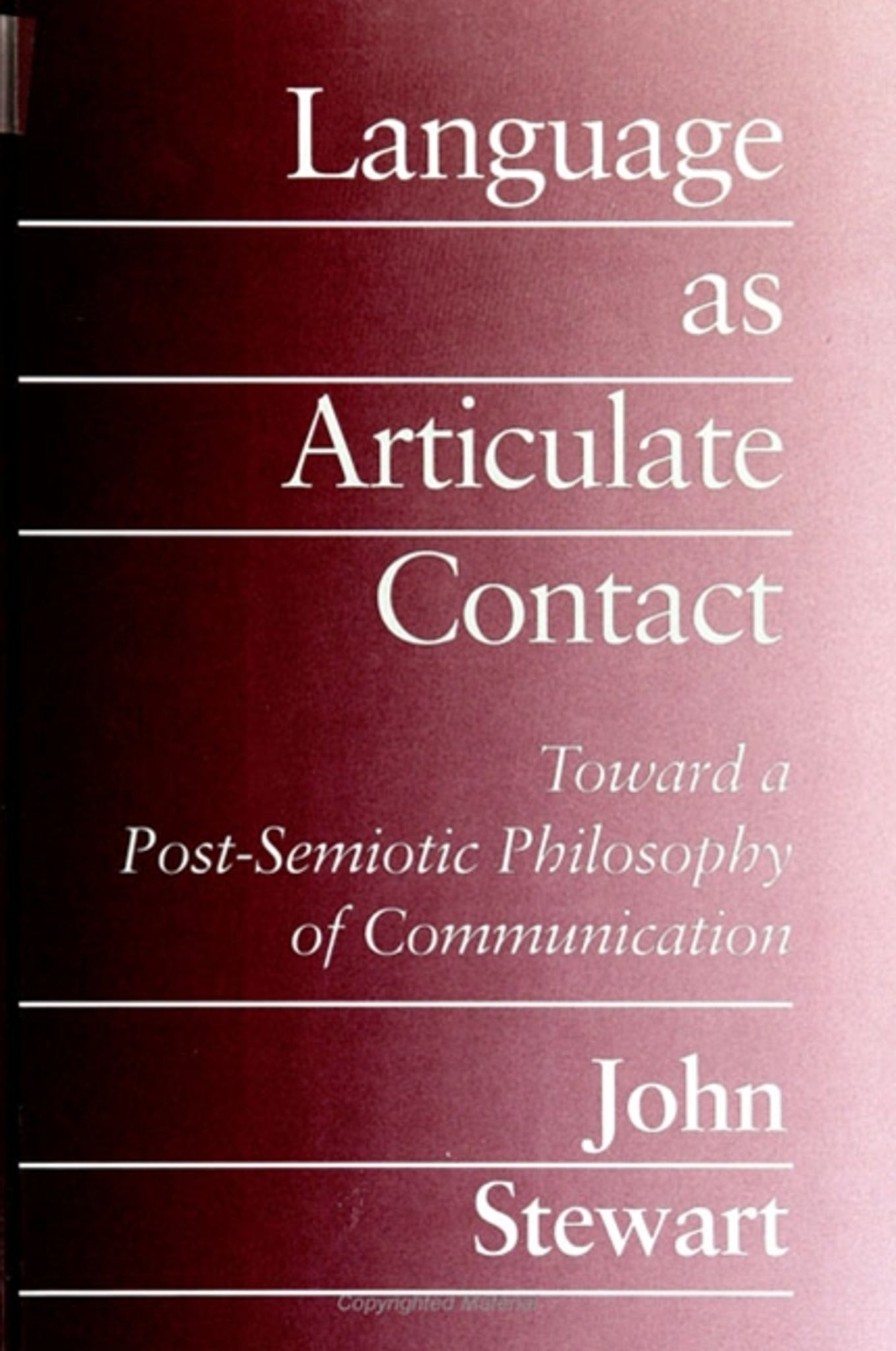We're sorry. An error has occurred
Please cancel or retry.
Language as Articulate Contact

Some error occured while loading the Quick View. Please close the Quick View and try reloading the page.
Couldn't load pickup availability
- Format:
-
03 February 1995

Critiques semiotic accounts of the nature of language and sets forth a dialogic alternative.
This book analyzes the prominent view that language is basically a system of signs and symbols; outlines an alternative that builds on aspects of the philosophies of Heidegger, Gadamer, Buber, and Bakhtin; and employs this alternative to criticize accounts of language developed by V.N. Volosinov, Kenneth Burke, and Calvin O. Schrag. From the perspective of communication theory, this book extends some features of the postmodern critique of representationalism to develop a post-semiotic account of the nature of language as dialogic.


"I believe that the question this book addresses—whether language should be considered as symbolic or constitutive—is THE central questions for communication scholars. As the first extensive examination of this question to be undertaken by a scholar in this discipline, this book will generate significant thinking. Communication textbooks almost without exception assume language to be symbolic, thereby fatally limiting our understanding of what humans do when we communicate. A book like this, by an author of Stewart's standing, can change that." — Bruce Hyde, St. Cloud State University
"This book addresses a fundamental assumption about language, the symbol model, and shows it to be problematical in serious ways. Stewart provides an alternative, positive case: he calls for a profound shift in our commonsense views of language, to see language first and foremost as a social activity in which persons partake and which constitutes our realities." — Richard Buttny, Syracuse University
Preface
Part I. Language: A System of Symbols or Articulate Contact?
1. The Symbol Model and the Nature of Language
2. The Symbol Model from the Ancients to Humboldt
3. Twentieth-Century Versions of the Symbol Model
4. Language as Constitutive Articulate Contact
5. Diverse Friendly Bedfellows
Part II. The Symbol Model and Three Philosophies of Language
6. Semiotics and Dialogue in Marxism and the Philosophy of Language
7. The Symbol Model and the Philosophy of Language: The Case of Kenneth Burke
John Stewart and Karen J. Williams
8. The Symbol Model and Calvin O. Schrag's Communicative Praxis
Notes
References
Index



